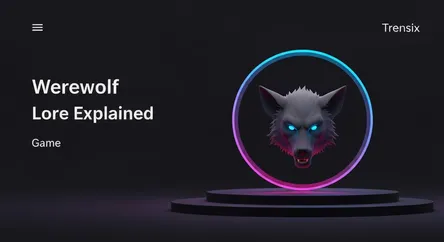Game
Werewolf Lore Explained

Explore the enduring legend of the werewolf. Uncover why this mythical creature remains a popular and thrilling element in video game and TTRPG lore.
What is it?
A werewolf, or lycanthrope, is a mythological human with the ability to shapeshift into a wolf. This transformation is often associated with the full moon and is typically depicted as an uncontrollable curse. Originating from deep-seated European folklore, werewolves embody the primal, untamed side of humanity. In modern media and games, they are portrayed as powerful, fearsome predators, sometimes tragic figures struggling with their dual nature. Their lore often includes specific weaknesses, most famously an aversion to silver. This blend of human tragedy and bestial power makes them a compelling figure in fantasy narratives.
Why is it trending?
Werewolves are a perennial favorite in gaming because they offer unique and dynamic gameplay possibilities. Titles like The Elder Scrolls V: Skyrim, The Witcher series, and World of Warcraft feature werewolves prominently, allowing players to either become one or hunt them. The fantasy of wielding immense lupine power is a major draw. Furthermore, social deduction games like Werewolf and its digital counterpart, Among Us, leverage the creature's core concept of a hidden threat, creating tense and engaging group experiences that continue to be popular on streaming platforms.
How does it affect people?
In games, the werewolf trope allows players to explore themes of duality and inner conflict. Choosing to become a werewolf often grants incredible strength, speed, and unique abilities, but it can come at a cost, such as a loss of control or new vulnerabilities. This gameplay mechanic forces players to make meaningful choices about power versus humanity. It provides a fantasy outlet for players to engage with their 'inner beast' in a controlled environment, offering a thrilling power fantasy that transforms how they interact with the game world and its characters.